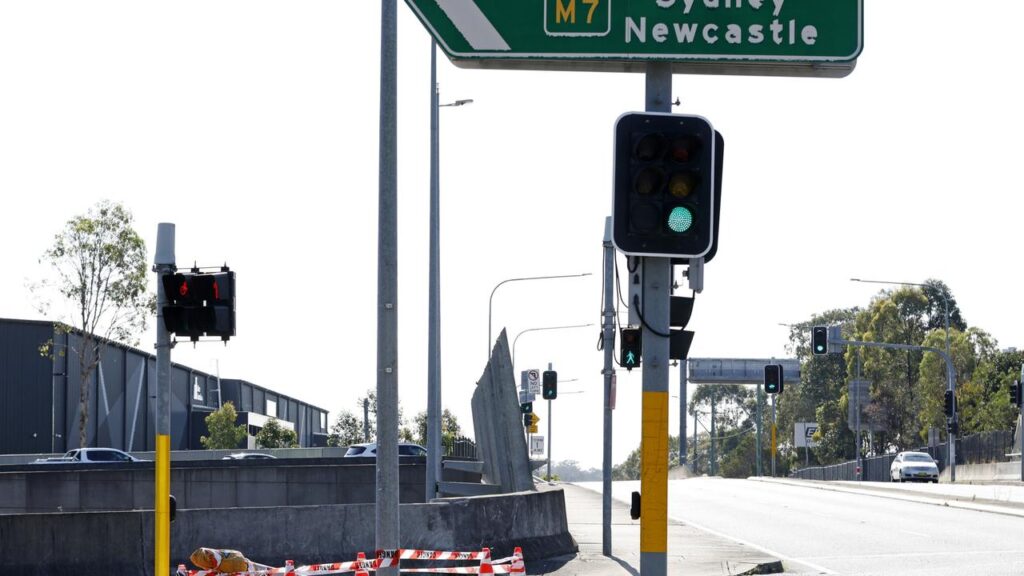‘Disturbing’ signs we’re failing a whole generation of Aussie kids – especially boys
Written by admin on August 14, 2024
Experts have urged governments to urgently address “sobering and disturbing” school testing results released today — that comes despite more than $600 billion injected into schools over the past decade.
The findings show one-in-three kids have fallen below minimum academic standards and some 400,000 students are struggling so much they need special catch-up tutoring.
The schools sector and experts have reacted with shock to this year’s NAPLAN results, which reveal there has been virtually no progress in critical areas since 2023’s “wake-up call”.
Federal Education Minister Jason Clare concedes “serious reform is needed” across the board, but particularly when it comes to supporting vulnerable and disadvantages students.
“Almost one-in-three students from poor backgrounds need additional support,” Mr Clare said.
“One-in-three Indigenous students, one-in-four students from remote locations, and one-in-two students from very remote locations require additional support.
“This shows that the education of your parents, where you live, and your background [have] a massive impact on your likelihood to start behind or fall behind at school.”
Failing to move the needle
There has been little evidence of major improvement in results, despite more than $600 billion injected into schools over the decade since the Gonksi reforms were initiated.
The fact that no progress has been made in several critical areas is “sobering”, Jordana Hunter, director of the education program at think tank The Grattan Institute, told news.com.au.
“Last year, we had the results from NAPLAN’s new scale and they showed one-in-three students in Australia do not meet the proficiency benchmarks in literacy and numeracy,” Ms Hunter said.
“In 2024, we’ve seen there’s no broadly change. That is sobering because we were shown last year that there’s a lot of work to do and that’s still very much the case.”
The NAPLAN test this year saw 1.3 million children across Year Three, Year Five, Year Seven, and Year Nine, from 9431 schools, examined in the areas of literacy and numeracy.
Of those, almost a quarter were classified as “developing” and “working towards expectations at the time of testing” – or, in plain English, did not meet minimum standards.
One in 10 children, the equivalent of 400,000 students, are so far behind that special educational interventions are required.
One of the particularly “troubling” results concerns the academic outcomes for boys, especially in high school, Ms Hunter said.
“We really need to grapple with the challenges we’ve got with boys. In Year Nine writing, for example, only half of boys are meeting the proficient level. I mean, that is really troubling.
“We have challenges across the board in writing, particularly in upper year levels, but to have only half of Year Nine boys reaching that proficiency level really worries me.”
The first ‘Covid generation’
The results for the youngest cohort to sit the test provides a potential clue about the impacts of long and disruptive Covid restrictions.
A “reasonable number” of Year Three students examined displayed struggles with reading proficiency, Jenny Donovan, chief executive of the Australian Education Research Organisation, pointed out.
“This is the cohort of children who were affected by lockdowns in a lot of jurisdictions at the start of their schooling,” Dr Donovan said.
“So, their first important year of learning was probably quite disrupted and we’re still mopping up from that experience.”
Without NAPLAN, that particular gap might not have been identified, she said.
Across the board, the results demonstrate why the testing is “so important” in measuring educational outcomes and exposing areas of improvement.
“Specifically, we don’t have enough children who are currently able to read at the level they need to in order to succeed at school and progress with their learning. So, it’s an opportunity to reflect on what we need to do next.”
‘Too much emphasis’ on tests
Katina Zammit has spent decades working in and researching disadvantaged schools, and has discovered first-hand that standardised testing is rarely an accurate measure of success.
“I don’t think it actually reflects the progress that students in disadvantaged schools, in poor areas,” Associate Professor Zammit from Western Sydney University’s School of Education said.
“Research tells us that the largest influence on a child’s education comes from their home context. The school and teaching can also contribute, of course, but the largest one is the socio-economic status and Indigeneity of a student. How do you use those elements to measure schools?”
She believes governments place “too much emphasis” on the outcomes of a single test to determine funding and fails to prioritise the support of teachers to “engage students in learning and make a real difference”.
“What works in one school doesn’t work in another. What works in one classroom doesn’t work in another.”
What needs to be done
In Ms Hunter’s view, the major failing in the education system is around not equipping teachers with “best practice and evidence-based approaches” to classroom learning.
“We have pockets of genuine excellence. We have schools that are really performing above the odds and supporting all students, including those from disadvantaged backgrounds, First Nations [communities], and students with additional learning needs.
“Those schools are really equipping kids to excel academically, but unfortunately we have not made sure that best practice is common practice. That’s the missing link.
“Teachers are doing the heavy lifting in classrooms day in, day out. We need to support teachers to be at their best, at the top of their game every single day, and to also work really collaboratively with their peers.”
Funding overhaul necessary
Education Minister Mr Clare said the government’s proposed Better and Fairer Schools Agreement will address the gaps identified by NAPLAN results.
The 10-year funding package, which includes an additional $16 billion for public schools, has so far failed to garner support from all the states and territories.
Only Western Australia and the Northern Territory have signed on, with New South Wales leading opposition and calling for a greater increase in funding.
“The agreement ties new funding to reforms to help lift student outcomes, sets targets and improves school funding transparency,” Mr Clare said.
Ms Hunter said “there’s a lot to like” about the strategy, particularly commitments surrounding foundational literacy and numeracy, as well as an investment in teaching excellence.
Shock data released last year revealed government funding to private schools had grown at twice the rate of public schools in the decade to 2021.
Taxpayer funds directed to independent and religious schools on a per child basis leapt by a third, compared to a 17 per cent lift over the 10-year period to government schools, the Australian Curriculum, Assessment and Reporting Authority figures showed.
Positively, in recent years, funding has increased across the board for all sectors, Ms Hunter said.
“Money definitely helps improve outcomes but I have seen schools with existing levels of funding significantly turn around their results,” she said.
“So, no-one should be waiting for additional money to roll up their sleeves and start doing this hard work. That’s not to say that schools wouldn’t benefit from more money – they would – but we can do more with the current funding levels.”
Reasons for optimism
The results show there’s much work to be done, but Dr Donovan reassured the public – and parents in particular – that there are reasons to be hopeful.
“The reason for optimism is that we know what will work,” she said.
“We know what the solution is. We know what we need to do. And that’s what keeps me really positive and enthusiastic about the work that I do.
“My challenge now is to get that message out and making sure that it does get picked up and put into practice. And I’m seeing that happening, so I have enormous optimism that we are going to be doing better for our students very soon.”







